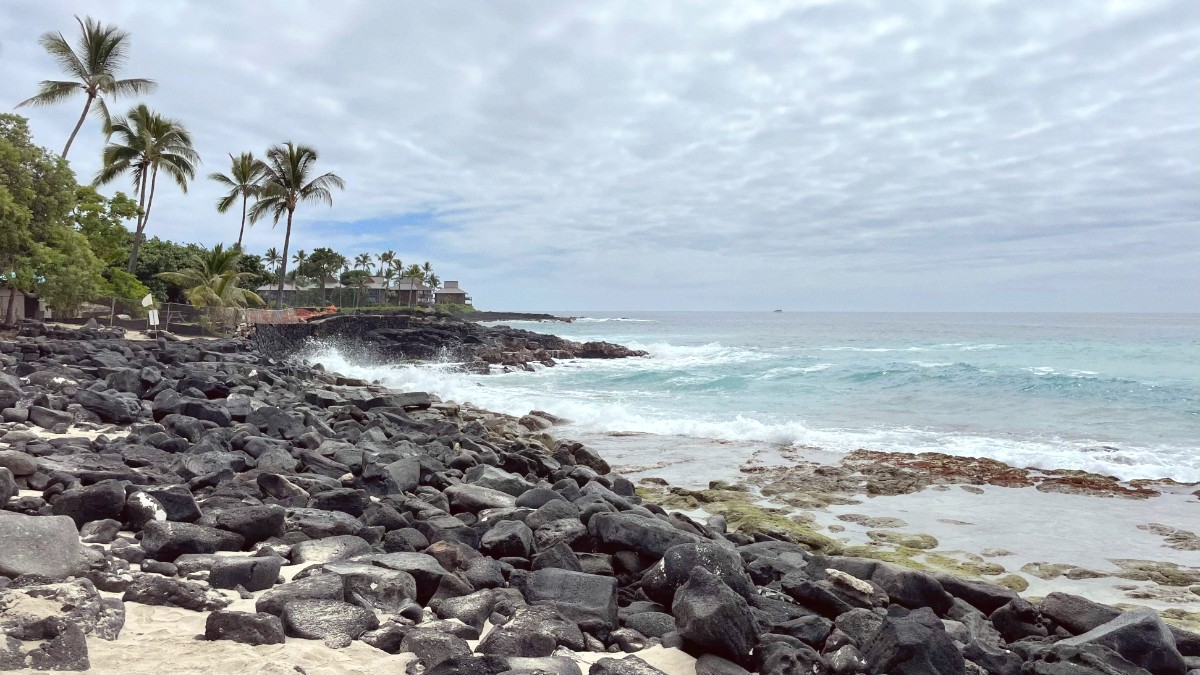
Hawaii, USA
Here, you discover more than just a destination; you find a connection to the 'aina, the land, and the rich traditions that make Hawaii unique. Whether you seek thrilling ocean adventures, a deep dive into history, or peaceful moments of repose on a sun-drenched beach, Kailua-Kona radiates a welcoming spirit and an array of experiences waiting for you. Get ready to explore a town that truly embodies the essence of aloha.
Kailua-Kona sits on the western coast of the Big Island of Hawaii, officially Hawaiʻi Island. This location places it squarely on the leeward side of the island, a position that grants it a noticeably drier and sunnier climate compared to the lush, rain-soaked windward side near Hilo.
The town itself stretches along the curve of Kailua Bay, its development extending inland up the gentle slopes of Hualālai volcano. This volcanic backdrop is a defining feature of the Kona District, giving the landscape its distinctive dark lava rock formations, fertile soil for coffee cultivation, and dramatic coastline.
The Big Island is Hawaii's largest and youngest island, a geological canvas still forming, dominated by five major volcanoes. Hualālai, the dormant volcano behind Kona, last erupted in 1801, its ancient lava flows shaping the terrain where coffee farms and residential areas now thrive.
Kona's coastal positioning means access to deep, calm Pacific waters, making it an ideal hub for marine activities. The deep-sea fishing industry thrives here, supported by the ocean's depth close to shore. The island's sheer size and varied elevations mean that within a short drive, you can transition from sunny, arid coastal areas to lush rainforests or high-altitude volcanic landscapes, each presenting a distinct experience. This geographical diversity forms one of the Big Island's most compelling draws, and Kailua-Kona serves as an excellent base for exploring it all.
Dormant volcano shaping Kona's landscape, last erupted 1801.
One of the world's most massive active volcanoes, subtly influencing weather.
Tallest mountain globally from its ocean base, often snow-capped.
Active volcano, source of vog, located on the east side.
Oldest of the five volcanoes, forming the northern part of the island.
Kailua-Kona possesses a rich history, deeply intertwined with Hawaiian royalty and the early days of modern Hawaii. It is a place as a former seat of power for the Hawaiian monarchy. King Kamehameha I, who successfully united the Hawaiian Islands into a single kingdom, spent his final years here after achieving his monumental goal.
His chosen residence, Kamakahonu, a sacred compound on Kailua Bay, included Ahuʻena Heiau, a reconstructed temple. This site served as a place for spiritual and political gatherings, embodying Kamehameha's vision for an unified and peaceful kingdom. Visitors can view the reconstructed temple from the grounds of the Courtyard King Kamehameha's Kona Beach Hotel, reflecting on its profound historical weight.
The arrival of Western missionaries in the early 19th century further shaped Kona's narrative. Mokuaikaua Church, completed in 1837, is a testament to this period. It is Hawaii's first Christian church, built from lava rock and local ʻōhiʻa wood, symbolizing the blend of new influences with enduring Hawaiian traditions. Its presence reflects a period of significant cultural transformation, as ancient customs met new beliefs. Missionaries introduced coffee plants in the early 19th century, and the slopes of Hualālai proved to be an ideal environment for cultivation. The Kona Coffee Living History Farm provides an unique glimpse into the lives of early coffee pioneers.
The town was also a major center for trade and fishing in ancient times. Its calm bay offered a safe harbor for canoes, facilitating commerce and interaction between various communities. The abundance of marine life supported a thriving fishing culture, which continues today.
Kailua-Kona extends a captivating blend of sun-drenched coastlines, deep historical roots, and an abundance of outdoor pursuits. This charming town on the Big Island's western side forms a hub for adventure and relaxation alike. Expect consistent warm weather, clear ocean waters, and a laid-back island atmosphere.
The town serves as a convenient base for exploring the wider island. From here, you can drive to Hawaii Volcanoes National Park on the east side to witness active volcanic landscapes, or ascend Mauna Kea for breathtaking stargazing. Kailua-Kona presents a welcoming gateway to the Big Island's diverse wonders.
Opportunities for snorkeling, scuba diving, deep-sea fishing, and Stand-up paddleboarding. Encounter spinner dolphins, green sea turtles, and humpback whales seasonally.
Explore ancient Ahuʻena Heiau, the royal Huliheʻe Palace, and the historic Mokuaikaua Church, Hawaii's first Christian church.
Savor Kona's fresh seafood, notably poke, and the world-renowned Kona coffee, available at numerous local farms.
For those drawn to the ocean, Kona presents opportunities for snorkeling, scuba diving, deep-sea fishing, and stand-up paddleboarding, with the chance to encounter spinner dolphins, green sea turtles, and, seasonally, humpback whales. The famed manta ray night snorkel offers an experience to remember, allowing you to observe these majestic creatures in their natural habitat.